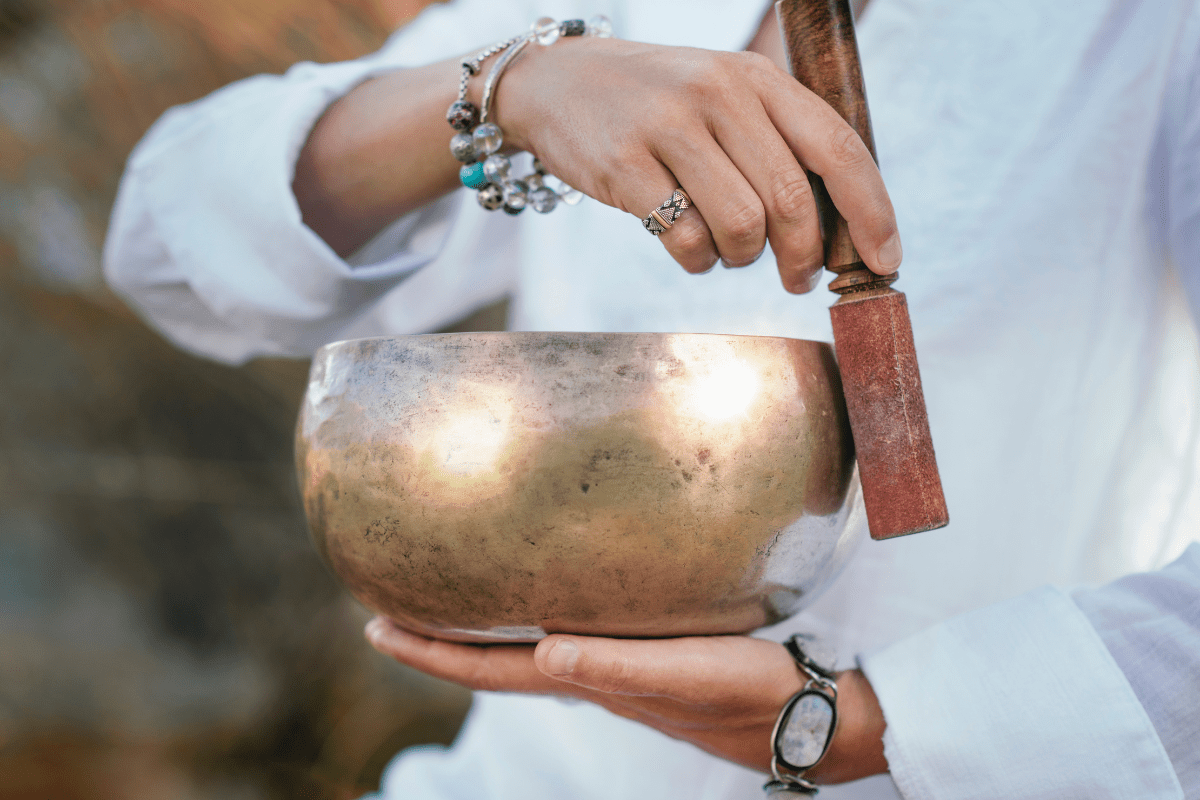January is dedicated to Prajnaparamita, and as the month comes to a close, I wanted to share what my January practice has looked like this year.
Prajnaparamita means “the Perfection of Wisdom” in Mahayana Buddhism. It is a concept that refers to the perfected way of seeing the nature of reality and a body of sutras (texts). Prajnaparamita is also personified or embodied by a female figure known as the Great Mother. She is the Mother of the Buddhas.
I began learning about Prajnaparamita in January 2021 when I joined the Mt Shasta Goddess Temple, also known by its Tibetan name, Tsogyal Lhamo Drayang Ling, or the Melodious Tsogyal Lhamo Temple. The Temple dedicates January to Prajnaparamita.
Although I’m not Buddhist, Prajnaparamita is a calming presence that I welcome after the frenetic energy of the holidays. A quiet January that begins each day with a calm morning practice centred on Prajnaparamita sets the right tone for the day and the year. Devotion to Prajnaparamita is also a way to honour the Temple, its lineage, work, and teachers.
My morning practice
My morning practice has changed a little since I last wrote about it in October 2021 (and it will change again soon), but here are the essential elements of it now:
- Water offering
- Smoke purification
- Acknowledgement of Country
- Light the candle for my ancestors and recite a prayer for them
- Recitation of my lineage prayer
- Self-blessing
- Light the candle for the Temple and recite a prayer
- Recitation of my Woman Shaman Priestess Commitments
- Recitation of the Queen of Great Bliss
- Devotion to Prajnaparamita
Devotion to Prajnaparamita
My working altar always has these objects:
- A container for a water offering
- A container for burning incense
- A white candle for my ancestors
- A white candle for the Temple
- A tarot or oracle deck
The rest changes depending on the goddess I’m honouring. For Prajnaparamita, I’ve added a white altar cloth, a white candle, a white jade mala, a singing bowl, and a framed image of Prajnaparamita; I don’t have a statue of her (yet).
I light her candle and recite a prayer. Sometimes I recite Praise for Prajnaparamita by Mandala Priestess Yeshe Matthews. More often, I recite the Heart Sutra.
The Heart Sutra is the most popular text in the Mahayana Buddhist tradition. It has been translated into English many times. Here’s one translation of the Heart Sutra by Buddhist translator Adam Pearcey. Here’s another translation of the Heart Sutra by Thích Nhất Hạnh, the famous Vietnamese Thiền Buddhist monk who died on 22 January 2022. I generally recite the translation of the Heart Sutra by Edward Conze, a scholar of Buddhism.
After reciting the Heart Sutra, I meditate. I play my singing bowl at the start and end.
Meditation
I meditate for 15-20 minutes each morning (except Sundays). Sometimes I spend the entire time quieting my mind. Sometimes I contemplate the Heart Sutra, and sometimes I practice tonglen.
Tonglen is Tibetan for “taking and sending”. Pema Chödrön explains:
“In tonglen practice, we visualize taking in the pain of others with every in-breath and sending out whatever will benefit them on the out-breath. In the process, we become liberated from age-old patterns of selfishness. We begin to feel love for both ourselves and others; we begin to take care of ourselves and others.”
A Skeptic’s Path to Enlightenment has a good explanation and guide to tonglen meditation. Here’s a guided tonglen meditation you can try.
I started doing tonglen meditation last year, and it has become a regular part of my meditation.
Learning more
Every year, I expand and deepen my knowledge of each goddess I dedicate the month to. I read articles, academic papers, and books and watch videos.
This year, I revisited Mother of the Buddhas: Meditations on the Prajnaparamita Sutra by Lex Hixon and read For the Benefit of All Beings: A Commentary on The Way of the Bodhisattva by the Dalai Lama.
I also explored the six paramitas, “perfections”, a collection of qualities Buddhists strive to cultivate. The six paramitas are:
- Dana: generosity
- Sila: discipline, virtue, morality, proper conduct
- Ksanti: patience
- Virya: energy, diligence, determination, perseverance
- Dhyana: concentration, meditation
- Prajna: wisdom
I’m learning to incorporate the six paramitas in my divination.
In a few days, I’ll move Prajnaparamita and her items back to the permanent shrine and rebuild the altar for my goddess of February, Themis.

